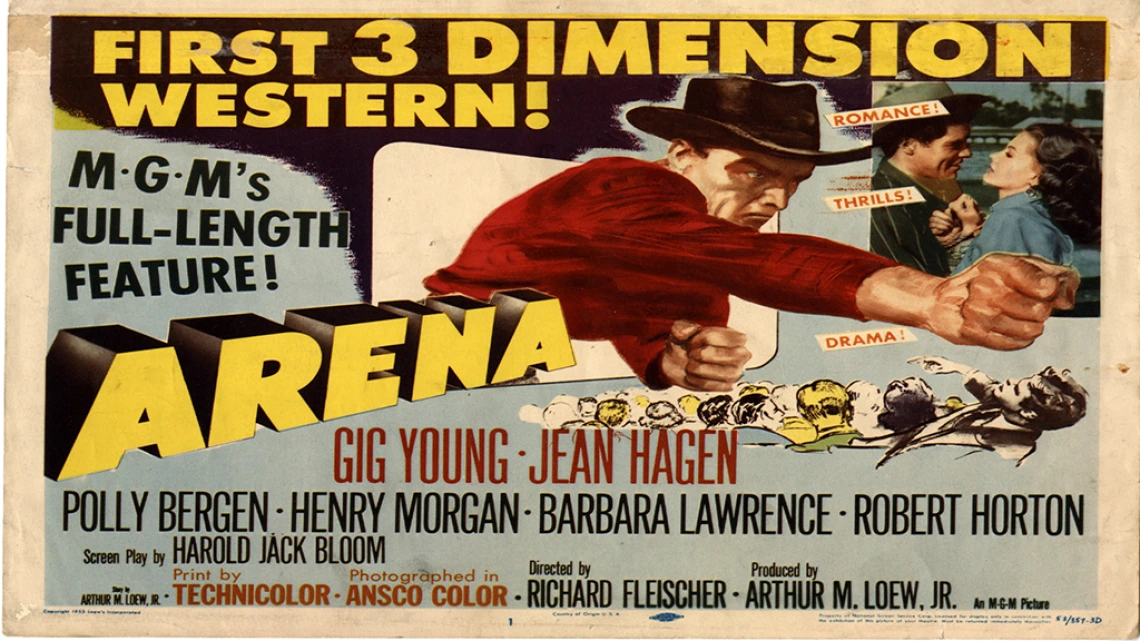Movie poster and associated materials collection

Arena Lobby Card, 1953.
Collection area: Performing Arts
Collection dates: 1908-1977
This is an artificial collection. The collection has eight series and contains movie posters, lobby cards, promotional still photographs, press books, and scripts relating to movies produced by American Film companies that were filmed in Southern Arizona, more specifically Old Tucson, or were set in the American Southwest. The collection also contains posters of advertisements of western goods and depictions of western life in the 20th century. Many of the movies are from the western genre from the late 1940's – 1960's, but the biker, film noir, science fiction, and thriller genres are also represented. Some of the posters and other associated material were part of the international distribution of films and come from Spain, Belgium, France, Germany, England, Mexico, and Denmark. Most traditional promotional poster sizes are represented including one sheets (27x41"), half sheets (22x28"), insert cards (14x36"), and window cards (14x22"). Materials are in English, French, Spanish, German, and Danish.
In the early 20th century, movie studios used the poster as a commercial tool to publicize a movie and draw audiences into theaters because they were mobile, conveyed an immediate and understandable message to mass audiences, and were cheap to produce. Posters created during this period were lithographs on cheap paper, and subsequently few examples from the early period of film history survive today and the ones that do are usually in poor condition. Between the 1930's-1940's Hollywood studios printed approximately 7,000-20,000 posters per movie, depending on the promotional budget for the film. Usually studios rented or sold posters to exhibitors for a minimal fee who displayed them in theaters. Exhibitors employed frames to display posters which lead to creating standard sizes for posters which included one-sheets, half-sheets, three-sheets, inserts, and lobby cards. Between 1940's to the mid-1980's, most major studios handed the production and distribution of all movie paper advertising to the National Screen Service (NSS ) which distributed an estimated 90 percent of movie posters in the United States. By the mid 1980's movie theaters with individual screens were replaced by multiplex theaters which used multiple theaters to screen a variety of films. Promotion of individual films gave way to promotion of multiple films in a limited space. This resulted in the phasing out of various sizes of movie posters including half-sheets, three-sheets, inserts, and lobby cards.
A collection guide explains what's in a collection. New to using our collections? Learn how to use a collection guide.
Collection guideAccess this collection
Visit us in person to access materials from this collection. Our materials are one-of-a-kind and require special care, so they can’t be checked out or taken home.
How to cite
Learn how to cite and use materials from Special Collections in your research.
